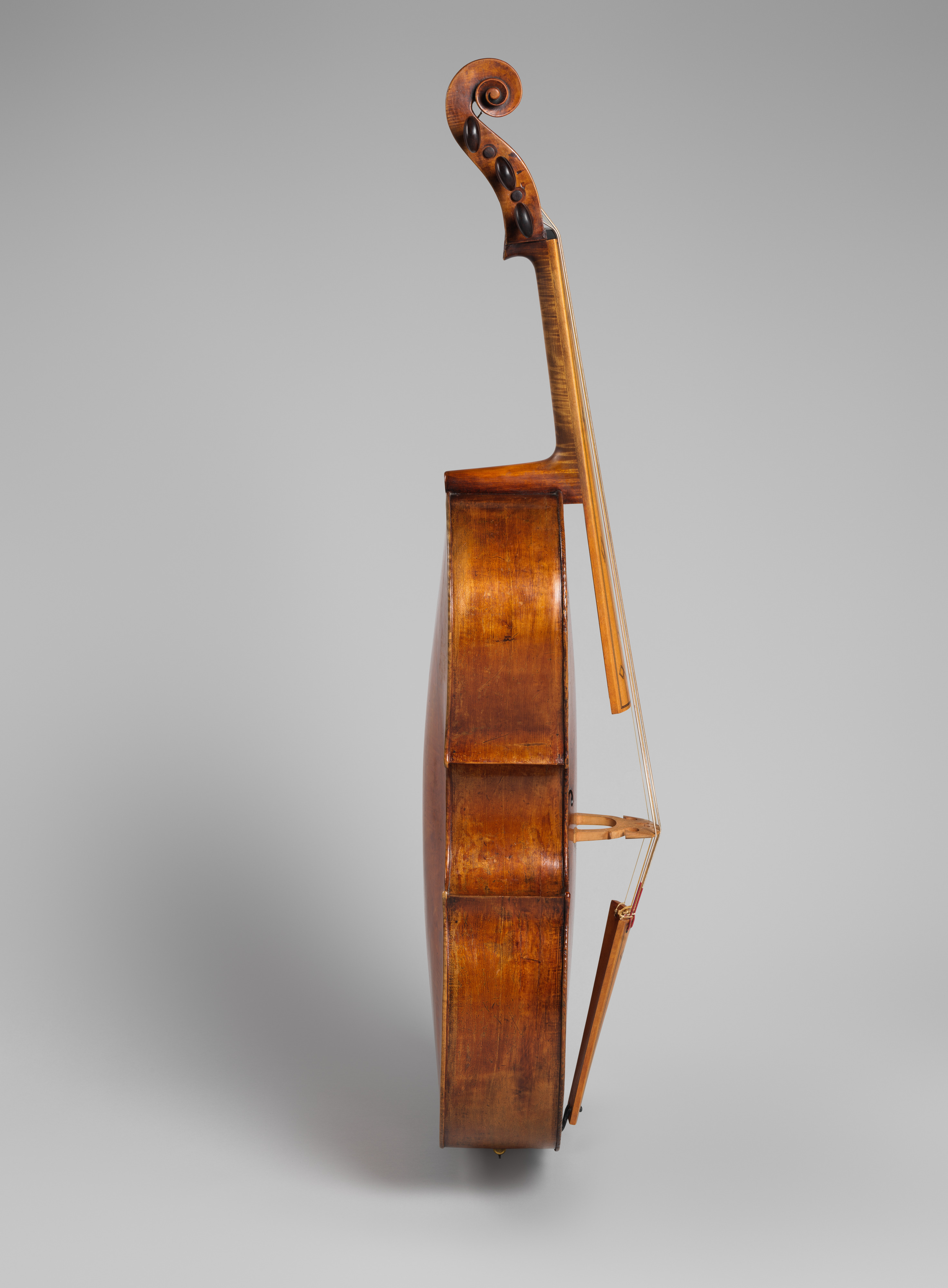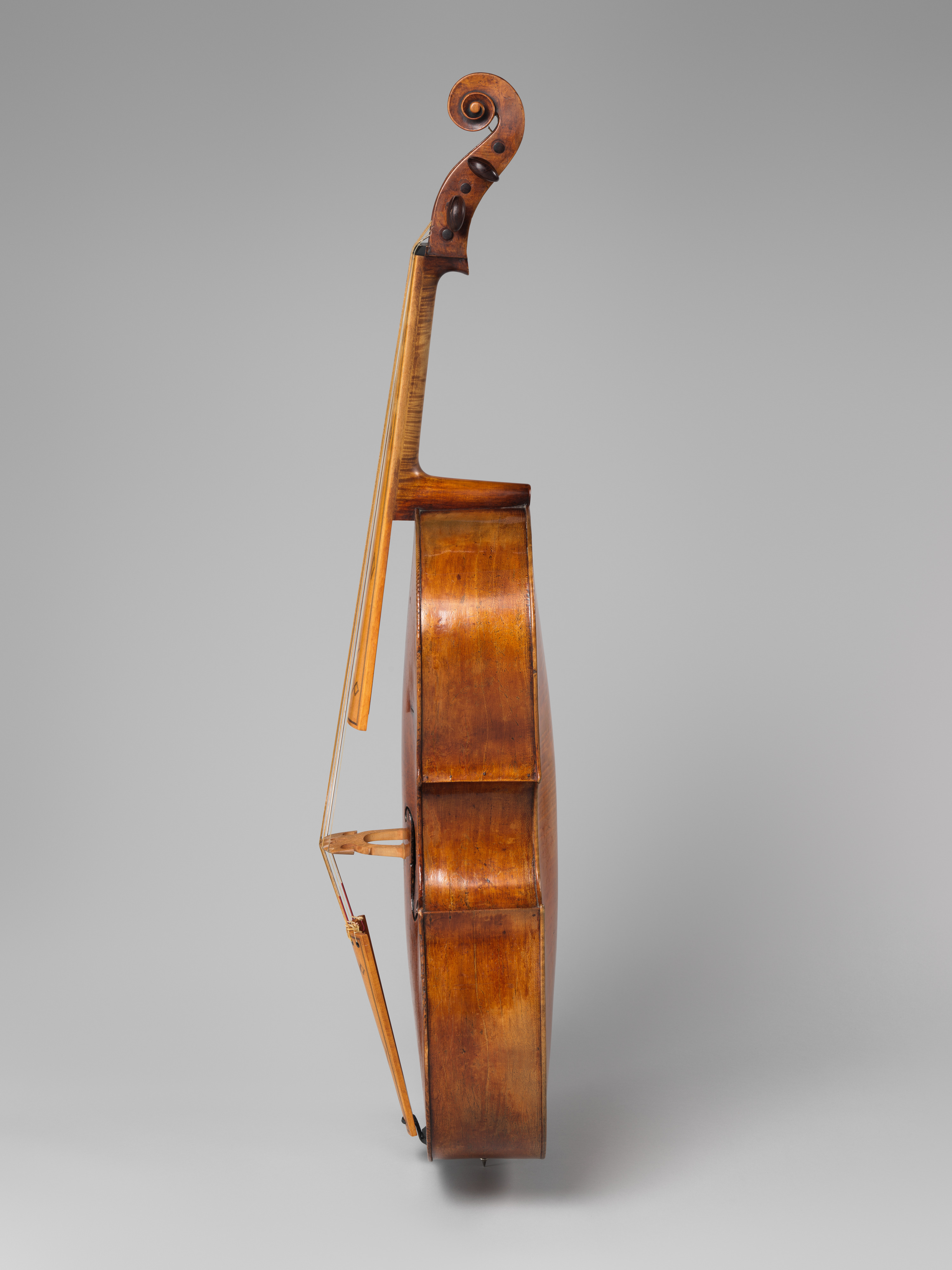"Amaryllis Fleming" Cello
Brothers Amati Italian
Not on view
Five-string cello, the back of two pieces of slab cut, highly figured maple extended with additional wings in the treble and bass bouts, ribs of slab-cut maple of similar stock, original scroll of finer and faintly figured maple; the belly of two pieces of spruce with strong, regularly spaced grain of medium width, marked by a distinctive knot on the upper treble bout; the whole with copious orange-brown varnish over a glowing golden ground. All elements are original except for the neck, fingerboard, tailpiece, bridge and pegs. The instrument is in Baroque set up as configured for Amaryllis Fleming in 1971.
This cello traces its history back to the formative years of the instrument in the mid 16th century. During this period, innovative makers like the Amati family experimented with a wider range of violin-family instruments than later became standard. Cellos were made in various sizes, including smaller examples that existed alongside the larger form of the instrument, which was often referred to as "basso." With a body length of 70.6 cm, this cello is some six centimeters shorter than the size that subsequently became standard for the instrument. Contemporaneous paintings depict smaller cellos being supported on the performer’s body with a carrying strap that enabled the instrument to be played while standing or on the move. A hole in the back of this cello that has subsequently been infilled with a peg was probably the fixing point for such a strap. Experimentation also extended to the number of strings on the cello, with some examples having a few as three strings and others upwards of five.
By dint of its smaller size, this cello survives in substantially original condition and has escaped the fate of the larger cellos made by Andrea Amati and the Brothers Amati, all of which appear to have been cut down to reduce their length. It exhibits all the defining elements of violin-family instruments as pioneered by the Amati dynasty, including the iconic scroll-shaped pegbox and f-shaped soundholes, distinctive outline and architecturally inspired arching of the body, and a rare abundance of richly luminous gold-brown Cremonese varnish.
The five-string cello was most famously called for in the sixth cello suite of J.S. Bach. The cellist Amaryllis Fleming, a pioneer of the early music movement, used this instrument to illuminate the little-explored world of the Baroque five-string cello and rose to fame as the first to play Bach’s cello suites on the instrument that best fulfilled the specifications of his music.
Bradley Strauchen-Scherer, 2023
Due to rights restrictions, this image cannot be enlarged, viewed at full screen, or downloaded.
This artwork is meant to be viewed from right to left. Scroll left to view more.






